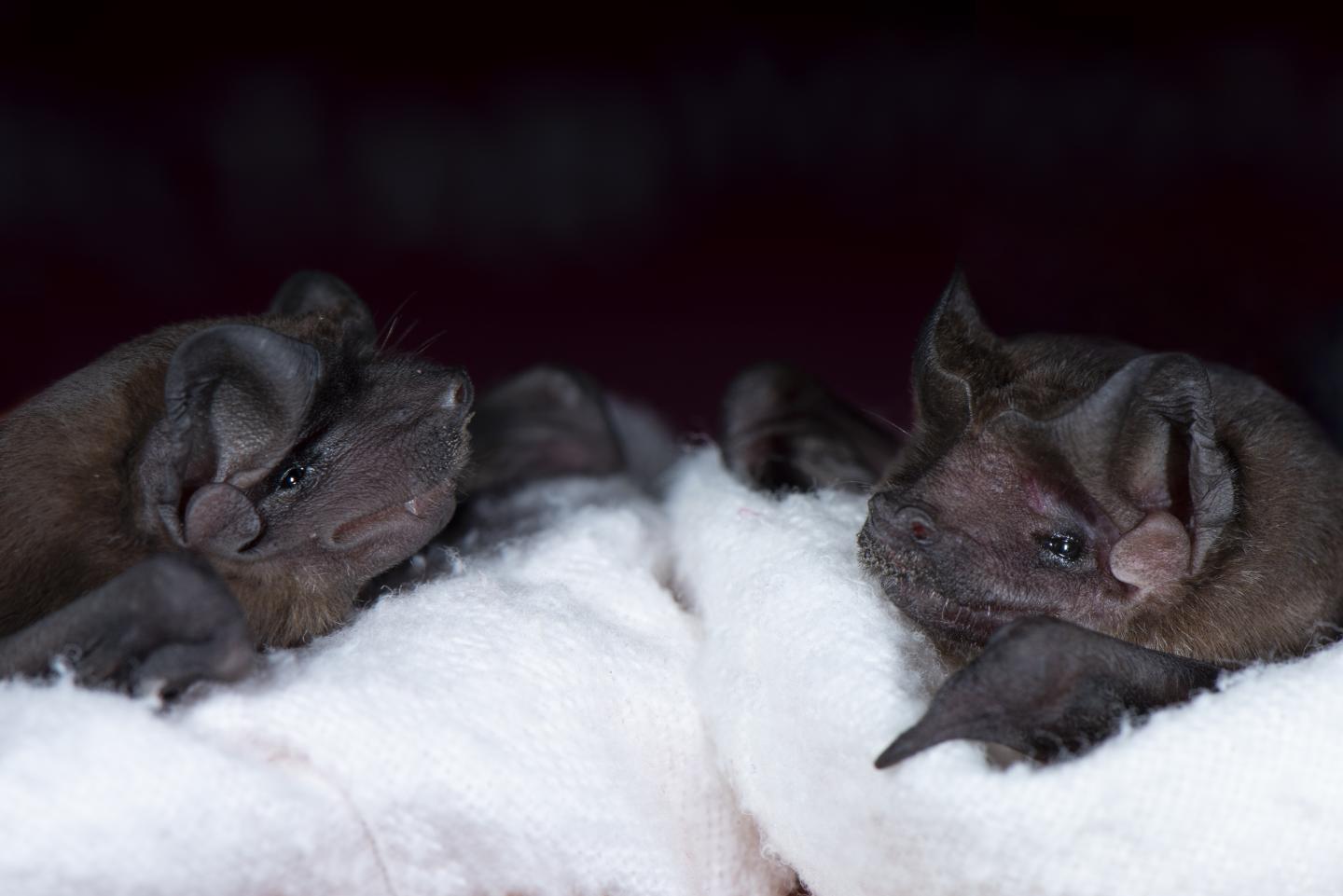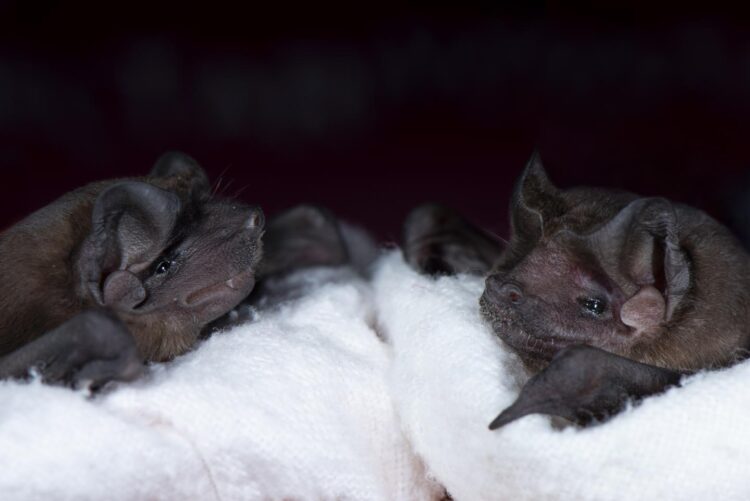
Credit: Irene Mendez Cruz
Searching for food at night can be tricky. To find prey in the dark, bats use echolocation, their “sixth sense.” But to find food faster, some species, like Molossus molossus, may search within hearing distance of their echolocating group members, sharing information about where food patches are located. Social information encoded in their echolocation calls may facilitate this foraging strategy, according to a recent study by Smithsonian Tropical Research Institute (STRI) scientists and collaborating institutions published online in Behavioral Ecology.
Previous research has identified several ways in which echolocation can transfer social information in bats. For example, “feeding buzzes,” the echolocation calls bats produce to home in on prey they’ve spotted, can serve as cues of prey presence to nearby eavesdropping bats. On the other hand, echolocation calls that bats produce while looking for food, called “search-phase” calls, were not known to transfer social information.
However, for group-foraging bats, coordinating flight in the dark with several other fast-flying individuals may require an ability to identify group members on the wing. If search-phase calls contain individual signatures the bats can perceive, it could allow them to know which individuals are flying near them without requiring specialized signals for communication.
Led by Jenna Kohles, STRI fellow and doctoral candidate at the Max Planck Institute of Animal Behavior in Germany, the research team tested whether search-phase echolocation calls contain information about a bat’s identity, and whether M. molossus can use this information to discriminate among different group members. The team exposed bats to search-phase echolocation calls in a habituation-dishabituation paradigm, a method where an animal is exposed to a repeating stimulus until it no longer reacts to it. Then, it is exposed to a new but similar stimulus to see if it reacts, which would indicate that it perceives a difference between the two stimuli.
“We played echolocation calls from two different bats that were both group members of the subject bat,” Kohles said. “By measuring the responses of the subject bats as we switched between calls from different individuals, we could learn about whether the bats perceived differences and similarities between the calls.”
They found that the bats indeed distinguish between different group members, likely by using individual signatures encoded in the calls. Their results could mean that search-phase calls serve a double function. They not only help bats detect prey, but also convey individual identities to nearby foraging group members. This coincides with the fact that the majority of M. molossus’ auditory cortex is tuned in to these search-phase calls, indicating the importance of processing them.
This finding offers insight into not only the social strategies these bats may use to meet their energetic needs, but also into the evolution of echolocation signals and social communication in bats.
“This study suggests that we may be underestimating the crucial ways social information influences bat foraging success and ultimately survival,” Kohles said.
###
The research team, consisting of members from STRI, the Max Planck Institute of Animal Behavior, the Centre for the Advanced Study of Collective Behaviour at the University of Konstanz, the Department of Biology at the University of Konstanz and the Department of Evolution, Ecology and Organismal Biology at Ohio State University, was funded by STRI and the German Academic Exchange Service.
The Smithsonian Tropical Research Institute, headquartered in Panama City, Panama, is a unit of the Smithsonian Institution. The institute furthers the understanding of tropical biodiversity and its importance to human welfare, trains students to conduct research in the tropics and promotes conservation by increasing public awareness of the beauty and importance of tropical ecosystems.
Media Contact
Leila Nilipour
[email protected]
Related Journal Article
http://dx.





